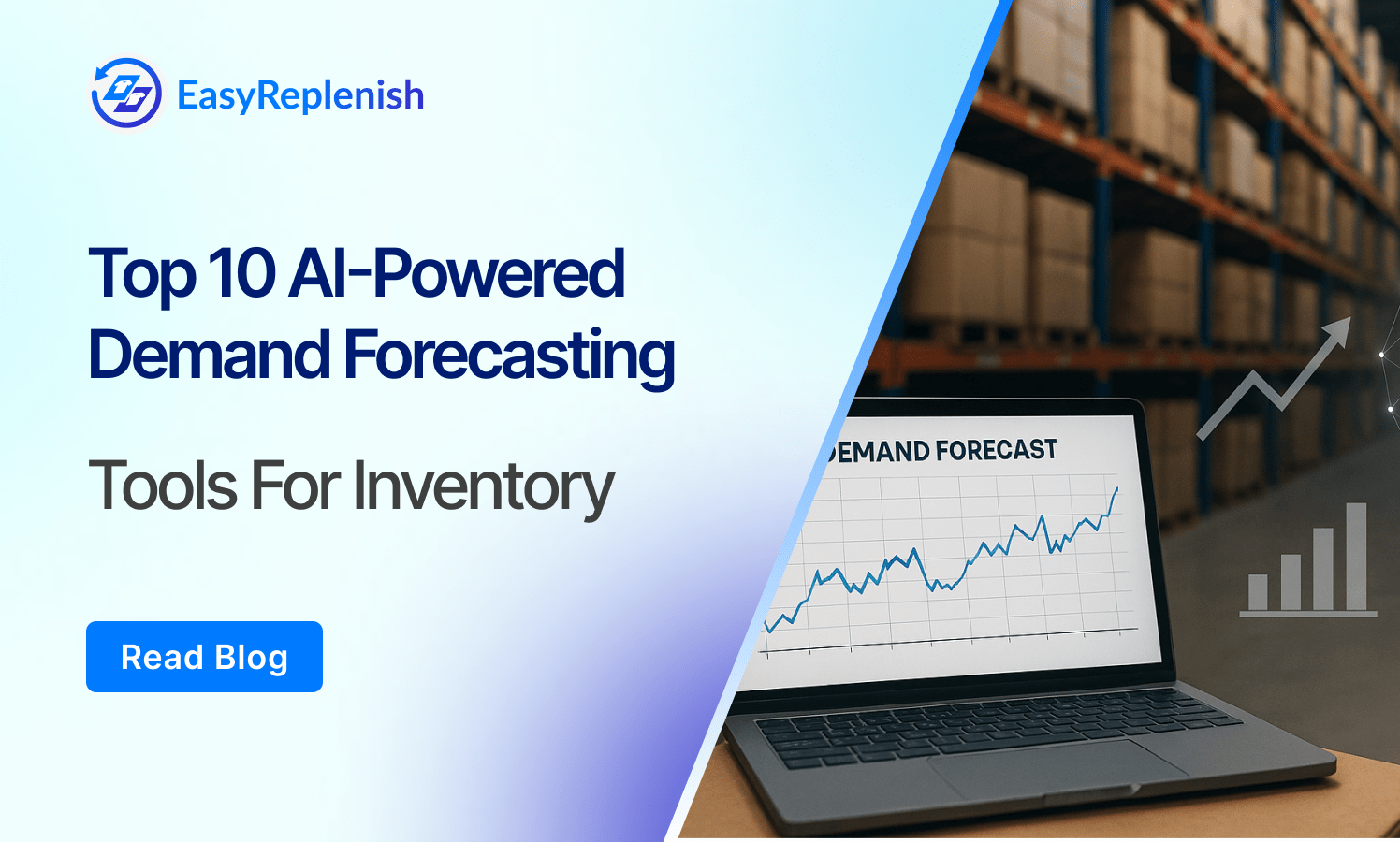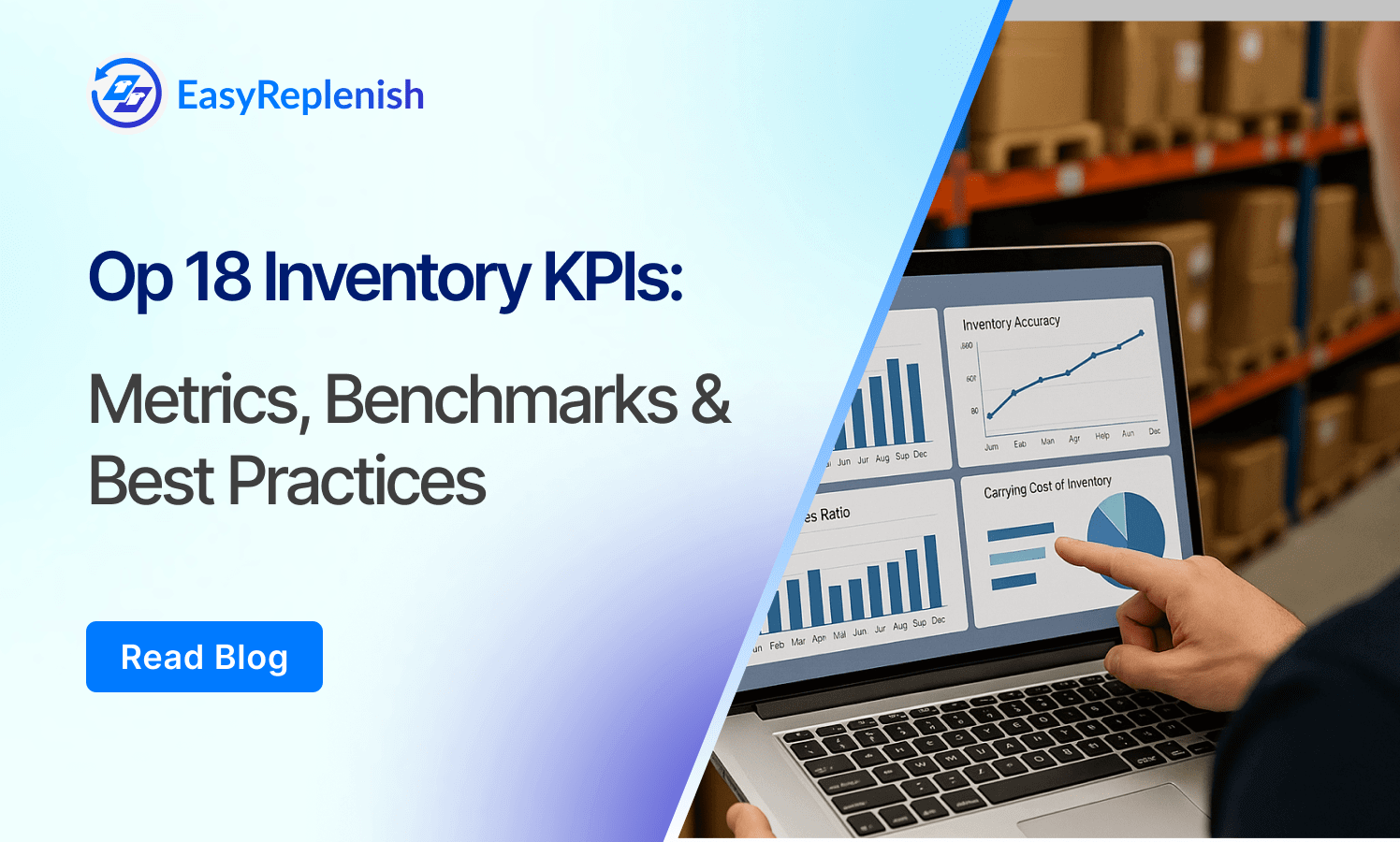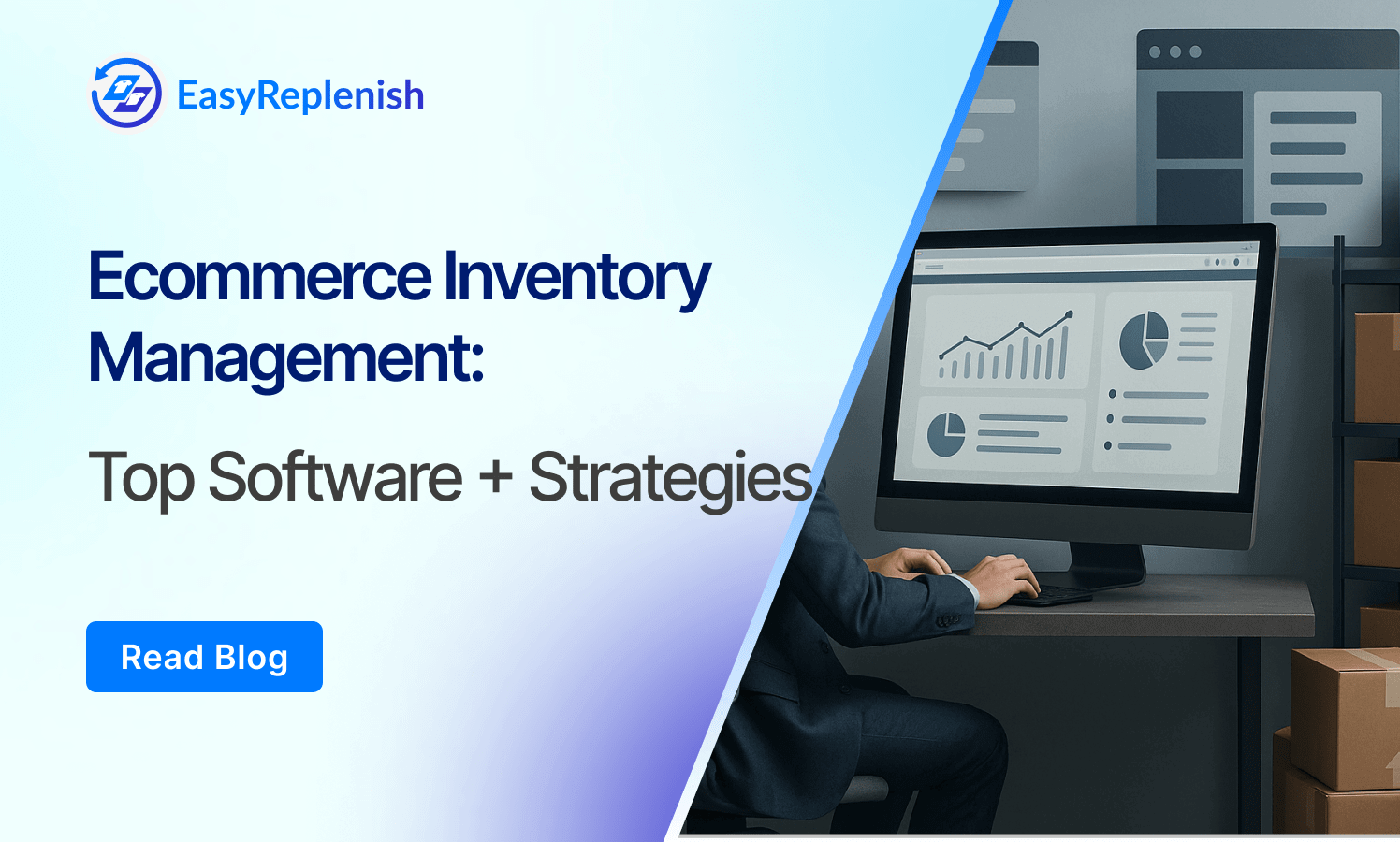AI in Inventory Optimization: Smarter Replenishment for D2C Brands

Inventory optimization has always been a high-stakes balancing act for direct-to-consumer (D2C) brands. You need to anticipate demand accurately, maintain lean stock levels, and fulfill orders fast—all without tying up cash in overstock or missing revenue due to stockouts. But with today’s fast-moving trends, unpredictable customer behavior, and multi-channel complexity, traditional inventory methods are no longer enough.
That’s where artificial intelligence (AI) comes in. AI-powered inventory optimization gives D2C brands the ability to forecast demand more accurately, automate replenishment in real time, and fine-tune inventory placement across warehouses and regions. Instead of relying on static reorder points or outdated forecasts, D2C teams can use machine learning models to respond to market signals instantly—making smarter, faster, and more profitable inventory decisions.
What Is AI-Powered Inventory Optimization?
AI-powered inventory optimization refers to the use of machine learning, data modeling, and real-time analytics to forecast demand, automate replenishment, and streamline inventory decisions across the supply chain. Unlike traditional systems that rely on historical averages or static rules, AI continuously learns from new data—adapting to shifts in customer behavior, market trends, and operational constraints.
At its core, AI in inventory management does three things exceptionally well:
- Detects patterns hidden in large datasets that humans or rule-based tools can’t easily spot.
- Predicts future demand more accurately by factoring in variables like seasonality, promotions, price sensitivity, social trends, and regional buying behavior.
- Optimizes decisions such as when to reorder, how much to replenish, and where to place stock—often in real time.
The result is an agile inventory system that improves service levels, reduces holding costs, and scales with growth—all without requiring constant manual input.
Key Inventory Challenges D2C Brands Face
Direct-to-consumer brands operate in a fast-moving, customer-driven environment where inventory decisions are both more complex and more critical than ever. Here are the core challenges that make traditional inventory optimization ineffective for modern D2C operations:
1. Unpredictable Demand Surges
D2C brands are heavily influenced by viral moments, influencer campaigns, product drops, and social trends—all of which can trigger sudden spikes in demand. Traditional forecasting models often fail to keep up, leading to frequent stockouts or missed sales windows.
2. Limited Historical Data on New Products
Many D2C brands launch new SKUs or variants regularly, but these items lack sufficient sales history to feed traditional models. This makes it harder to predict how much to order or when to replenish, especially when launching into new categories or channels.
3. Multi-Channel Fulfillment Complexity
Inventory is no longer stored in a single warehouse. D2C brands often split stock across multiple 3PLs, micro-fulfillment centers, or even in-store locations to reduce delivery times. Keeping inventory balanced—and avoiding duplicate stockouts across nodes—is a constant challenge.
4. Lean Operations with Limited Forecasting Resources
Many growing D2C teams don’t have large planning departments or data analysts. Instead, they rely on lean processes, spreadsheets, or basic inventory tools—which limits their ability to forecast at the SKU level or adjust quickly to demand fluctuations.
5. Need for Real-Time Decision Making
Unlike wholesale, where purchase orders are placed months in advance, D2C brands need to make faster, more frequent inventory decisions. Delays in reacting to sales velocity, lead time shifts, or supplier disruptions can create serious operational risks.
6. High SKU Complexity with Variants
D2C brands—especially in fashion, beauty, or wellness—often deal with hundreds of product variants (e.g., sizes, colors, formulas). Forecasting and replenishing each variant at the right time and quantity becomes extremely complex, especially when consumer preferences shift rapidly.
7. Tight Cash Flow and Inventory Carrying Costs
Unlike enterprise retailers, D2C brands typically operate with tighter margins and less room for error. Overstock ties up working capital, while stockouts lead to lost revenue and customer churn. Optimizing inventory isn’t just about efficiency—it’s a financial necessity.
How AI Solves These Inventory Challenges for D2C Brands
AI doesn’t just streamline inventory workflows—it introduces a fundamentally smarter, more adaptive approach to forecasting and optimization. Below is a detailed look at how AI addresses the most pressing inventory challenges for modern D2C businesses:
1. Predictive Demand Forecasting at SKU-Level
AI models leverage machine learning to process a variety of structured and unstructured data sources—not just historical sales, but also signals from digital marketing campaigns, influencer activity, website traffic, product reviews, seasonality, and regional trends.
These models learn correlations that humans often miss, identifying early signs of demand shifts. They can forecast demand for individual SKUs, including variants (size, color, etc.), at store or warehouse level—enabling hyper-targeted inventory planning and preventing both overstock and stockouts.
2. Automated, Dynamic Reorder Triggers
Traditional replenishment relies on fixed reorder points, which become obsolete the moment demand patterns change. AI dynamically recalculates reorder quantities and timing using real-time inputs like current inventory, sell-through velocity, supplier lead times, shipping delays, and demand forecasts.
This ensures that replenishment is not only timely but also responsive to volatility—reducing manual decision-making and the lag between insight and action.
3. Inventory Optimization Across Channels and Locations
AI algorithms evaluate sales velocity, fulfillment speed, shipping costs, and customer location data to recommend optimal stock distribution across warehouses, 3PLs, retail stores, and micro-fulfillment centers.
Rather than pushing bulk inventory to a central hub, AI helps D2C brands position stock closer to where demand is emerging—improving delivery times and reducing last-mile costs. This is especially critical for omnichannel brands juggling online, marketplace, and retail fulfillment simultaneously.
4. Handling New Product Launches Without Historical Data
New product forecasting is a blind spot for traditional systems. AI addresses this by using attribute-based and cluster modeling. It compares new SKUs to similar existing products—based on category, pricing, branding, seasonality, material, and even marketing campaign type—to project likely demand curves.
As real-time sales data starts flowing in, the model retrains itself and adjusts projections automatically, reducing the risk of overcommitting or underordering during product launches.
5. Anomaly Detection and Real-Time Alerts
AI systems are excellent at spotting data anomalies—sudden spikes or drops in sales, unusual inventory depletion, supplier delays, or unexpected order cancellations. These deviations are automatically flagged, and AI can even simulate outcomes if no action is taken.
This early warning system enables proactive inventory decisions, such as accelerating replenishment, triggering supplier escalations, or pausing ad campaigns to avoid overselling.
6. Optimized Safety Stock and Lead Time Buffers
Many D2C brands use static safety stock formulas, which fail to adapt to real-world fluctuations in demand or supply. AI models, on the other hand, calculate dynamic safety stock levels based on demand volatility, SKU priority, lead time variability, and service-level targets (e.g., 95% availability).
This allows brands to reduce excess stock on slower-moving SKUs while increasing buffer for high-risk items—ensuring optimal balance between cost and service level.
7. Continuous Learning and Model Adaptation
Unlike static forecasting rules, AI models learn and evolve. Every sales cycle, product launch, and fulfillment event feeds back into the system. As conditions shift—whether it's a new sales channel, a spike in returns, or supply chain delays—AI refines its assumptions and retrains its algorithms. This continuous feedback loop makes inventory planning more resilient and future-ready, especially in volatile consumer environments.
Case Example: How a D2C Fashion Brand Uses AI for Inventory Optimization
Brand: Arcana Threads — a fast-growing D2C fashion label selling seasonal streetwear collections across the US and Europe through its online store and marketplace channels.
Challenge:
Arcana struggled with forecasting demand for new seasonal collections. Influencer-driven traffic led to sudden spikes in orders for specific SKUs (e.g., a trending hoodie in size M), while other variants (e.g., XL in lesser-seen colorways) sat unsold. The team used spreadsheets and static reorder points, but these couldn’t keep up with fast-moving inventory needs. The result: frequent stockouts of bestsellers, excess inventory of slow movers, and mounting warehousing costs.
AI-Driven Solution:
Arcana implemented an AI-powered inventory platform that integrated with its D2C store, WMS, and marketing tools. Here’s how AI transformed their operations:
- SKU-level demand forecasting was trained on sales history, campaign data, and influencer mentions to predict demand per size/color before launch.
- Automated replenishment adjusted reorder timing based on live sales velocity and supplier lead time buffers.
- New product forecasts were generated using similarity modeling based on previous season launches and category trends.
- Real-time inventory balancing helped reallocate stock between warehouses to reduce shipping times during promotions.
- Markdown optimization models recommended discount timing for slower-moving variants, improving sell-through without margin erosion.
Result:
Within one season, Arcana reduced stockouts by 38%, improved inventory turnover by 27%, and freed up 15% of working capital tied in excess stock. Their planning team could now focus on strategy instead of firefighting inventory issues.
How to Get Started with AI Inventory Optimization
While AI may sound complex, adopting it for inventory optimization doesn’t have to be overwhelming. For D2C brands, especially those scaling fast, getting started is less about building AI in-house—and more about aligning data, processes, and tools that can harness it effectively.
1. Audit Your Data Readiness
Start by evaluating the quality and consistency of your inventory, sales, and fulfillment data. AI models rely on clean, structured data—so ensure your SKUs are standardized, historical sales are accurately captured, and integrations (like your WMS, ERP, or Shopify backend) are reliable.
2. Identify High-Impact Use Cases
You don’t need to overhaul your entire inventory system at once. Focus first on where AI can deliver quick wins—such as improving forecasts for top-selling SKUs, optimizing safety stock, or reducing stockouts on high-margin products. This helps build internal confidence and unlock early ROI.
3. Choose an AI-Enabled Inventory Platform
Rather than building models from scratch, use a solution like EasyReplenish that offers out-of-the-box AI capabilities tailored for D2C brands. Look for platforms that support demand forecasting, automated replenishment, and SKU-level planning—without requiring a data science team.
4. Test, Measure, and Refine
AI adoption is not a one-time project—it’s a continuous cycle. Start with a controlled rollout (e.g., a product category or fulfillment region), benchmark performance against your existing process, and refine based on results. As your model accuracy improves, scale AI across more categories and channels.
5. Train Your Team Around AI-Driven Workflows
Planners and merchandisers need to shift from manual data crunching to decision-making based on AI insights. Ensure they understand how the system works, what the forecasts represent, and how to act on them. The goal is not to replace human judgment, but to amplify it.
Benefits of AI Inventory Optimization for D2C Brands
AI-powered inventory systems don’t just make operations more efficient—they unlock new levels of agility, accuracy, and profitability that traditional tools can’t match. For D2C brands where margins are thin and customer expectations are high, AI delivers measurable business value across every stage of the inventory lifecycle.
1. Fewer Stockouts, Higher Fill Rates
By continuously analyzing sales signals and demand fluctuations, AI improves forecast accuracy—especially at the SKU level. This reduces stockouts on fast-moving products, ensuring that high-converting traffic never lands on an “out of stock” page.
2. Faster Inventory Turns and Lower Holding Costs
AI dynamically adjusts reorder quantities and timing, keeping inventory lean without compromising service levels. This results in faster turnover and less capital tied up in unsold stock—freeing cash for growth, marketing, or new product development.
3. Improved New Product Planning
Through attribute-based and lookalike modeling, AI enables more accurate forecasting for new SKUs—something traditional models can't handle well. Brands can launch with greater confidence, minimize overbuying, and quickly scale up successful products.
4. Higher Forecast Accuracy in Dynamic Environments
Unlike rule-based systems, AI adapts to demand drivers like seasonality, promotions, influencer campaigns, and regional spikes. This ensures your forecasts remain accurate even when historical patterns break.
5. Automated Replenishment with Less Manual Work
AI takes over repetitive forecasting and reorder tasks. Planners can focus on high-value strategy—like assortment decisions or supplier negotiations—while the system handles day-to-day stock optimization.
6. Smarter Markdown and End-of-Season Management
AI models can identify slow-moving SKUs early and recommend optimal discount timing and depth. This helps clear excess inventory profitably without eroding brand value or cannibalizing full-price sales.
7. Stronger Cross-Channel Inventory Visibility
For D2C brands operating across web stores, marketplaces, and retail, AI provides real-time, location-level inventory insights. This enables smarter allocation, faster fulfillment, and fewer missed sales across channels.
EasyReplenish: Built for AI-Driven Inventory Optimization in D2C
EasyReplenish is purpose-built to bring advanced AI-powered inventory optimization to modern D2C brands—without the need for internal data science teams or complex implementation cycles. Whether you're scaling a fashion label, wellness brand, or lifestyle D2C product line, EasyReplenish helps you plan smarter, replenish faster, and grow more profitably.
1. AI Models Built-In and Ready to Deploy
EasyReplenish comes pre-integrated with industry-proven forecasting models—like exponential smoothing, ARIMA, Croston’s method, and machine learning-driven demand predictors. It intelligently selects the right model for each SKU based on sales behavior, velocity, and seasonality—so you get accurate forecasts without needing to configure algorithms manually.
2. Real-Time Replenishment Engine
Instead of relying on static reorder points or manual spreadsheet updates, EasyReplenish automatically recalculates inventory needs in real time. It accounts for current sales velocity, supplier lead times, promotional calendars, and fulfillment constraints—so you never miss reorder windows or overstock on the wrong items.
3. Designed for D2C Scale and Complexity
From handling hundreds of variants per product to forecasting for multiple fulfillment nodes, EasyReplenish is optimized for the SKU complexity and speed of D2C businesses. Whether you're running a drop-based model, seasonal collection, or continuous evergreen catalog, the platform adapts to your inventory rhythm.
3. Smart Recommendations. No Guesswork.
EasyReplenish doesn’t just surface data—it recommends what to reorder, when, and how much, all backed by machine learning. It also flags anomalies, suggests markdown timing, and provides SKU-level profitability insights to help you make confident inventory calls, faster.
4. Seamless Integration and Fast Time-to-Value
With pre-built integrations into Shopify, ERPs, WMSs, and analytics tools, EasyReplenish gets your AI inventory workflows live within weeks—not months. You get results fast, and scale without rebuilding your stack.
FAQs
Q1. Can small D2C brands afford to use AI for inventory optimization?
Yes. Modern AI inventory tools like EasyReplenish are designed for lean teams and growing brands—not just enterprise retailers. These platforms offer out-of-the-box AI models, intuitive dashboards, and plug-and-play integrations that make AI accessible without requiring a large tech team or massive upfront investment. In fact, early-stage brands often benefit the most because they can build scalable systems from day one.
Q2. How accurate is AI demand forecasting compared to traditional methods?
AI-powered forecasting is significantly more accurate than traditional rule-based or manual spreadsheet methods—especially in dynamic environments. AI models adapt in real time to seasonality, sales velocity, campaign data, and shifting trends. They also improve over time by learning from past performance, making them especially effective for fast-changing D2C categories like fashion, wellness, and consumer electronics.
Q3. What kind of data do I need to implement AI-driven inventory planning?
At a minimum, you'll need clean historical sales data, current inventory positions, SKU-level attributes, and supplier lead times. More advanced systems can also use marketing performance data, traffic trends, returns, and customer location data to enhance accuracy. Even with basic data, AI models can begin generating usable forecasts—and get smarter as more data is layered in.
Q4. How does AI help with new product launches that have no sales history?
AI can estimate demand for new SKUs by analyzing similarities with existing products in terms of category, pricing, color, season, and campaign type. This approach—known as attribute-based or lookalike modeling—enables accurate launch forecasts even with zero historical data. As sales data comes in, AI models retrain in real time to refine projections and trigger appropriate replenishment actions.
Q5. Is AI useful for inventory optimization in the fashion D2C industry?
Absolutely. Fashion is one of the most challenging inventory categories due to short product life cycles, high SKU complexity (sizes, colors, fits), and trend-driven demand. AI excels in this environment by forecasting at the variant level, adjusting for seasonal shifts, optimizing safety stock, and helping brands avoid costly overproduction or missed demand peaks. Many leading fashion D2C brands are already using AI to align production and inventory with real-time consumer behavior.


.png)





